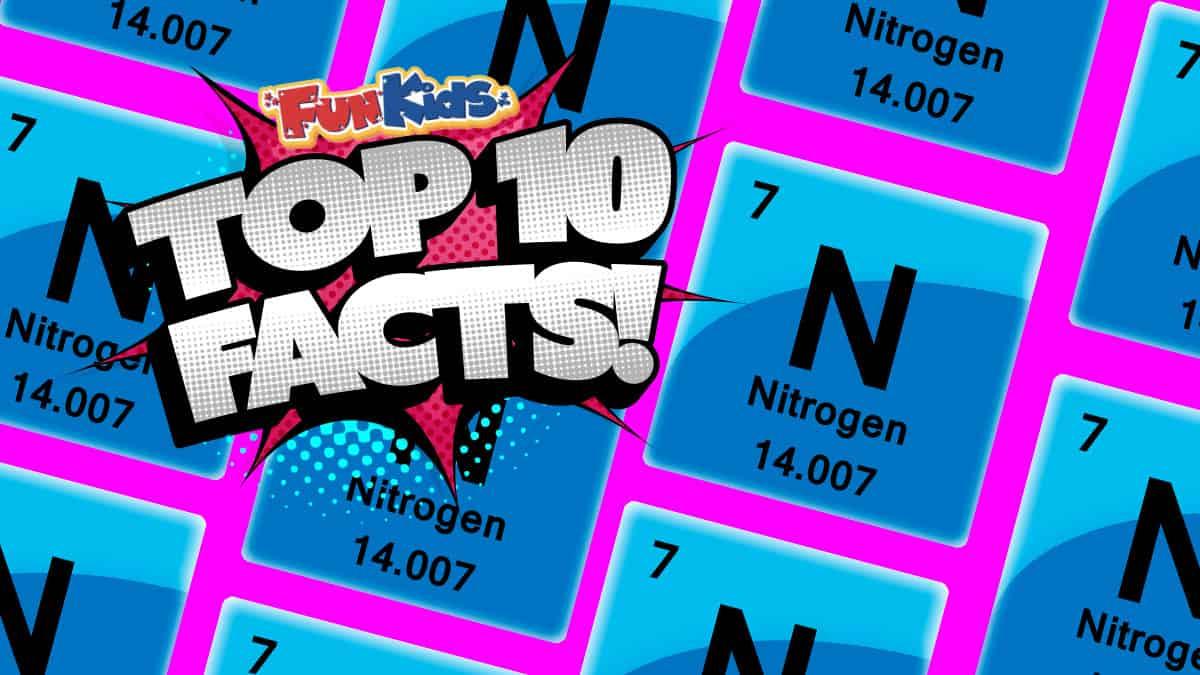Let’s explore the fascinating world of nitrogen! Often overlooked but essential for life as we know it, nitrogen is a very clever element! From its abundance in the air we breathe to its role in everything from ice cream-making to tyres. Uncover the wonders of nitrogen and its impact on our world…
1. Nitrogen makes up around 78% of the Earth’s atmosphere.
Nitrogen makes up about 78% of Earth’s atmosphere. Nitrogen gas is all around us, comprising the vast majority of the air we breathe.
There’s lots of it but it’s often overlooked because it’s colourless, odourless, and tasteless.
So, what makes it so clever?
2. Every living thing needs nitrogen to survive.
Nitrogen is crucial for life because it is an essential component of proteins, which are the building blocks of living organisms.
Every living thing on Earth needs nitrogen to survive.
Proteins, which are vital for growth and repair in living organisms, are made up of amino acids, and nitrogen is a key element in these amino acids.
3. Nitrogen is used when making ice cream!
Nitrogen is used in the process of making ice cream to freeze the mixture quickly, creating a smooth texture.
Ever wondered how ice cream is made so creamy? Liquid nitrogen is often used in the process.
When added to the ice cream mixture, it rapidly freezes it, resulting in smaller ice crystals and a smoother texture.
4. Nitrogen expands and contracts depending on the temperature.
Nitrogen gas expands when it’s heated and contracts when it’s cooled, which is why it’s used in some types of tyres to maintain proper pressure.
Tyre manufacturers sometimes fill tyres with nitrogen instead of regular air.
This is because nitrogen is more stable under temperature changes, helping to maintain consistent tyre pressure for longer periods, which can improve vehicle handling and fuel efficiency.
5. Lightning can convert nitrogen gas into compounds.
During a lightning strike, the high temperature and energy can cause nitrogen and oxygen molecules in the air to react, forming nitrogen oxides.
These compounds dissolve in rainwater, creating nitrates that are essential nutrients for plants.
6. It’s used to preserve food!
Nitrogen is used to preserve food by replacing oxygen in packaging, preventing spoilage and extending shelf life.
The packets often contain nitrogen gas, which helps to keep the food fresh by displacing oxygen, which can cause food to spoil.
7. We release nitrogen as a waste product when we breathe out.
The air we exhale contains about 78% nitrogen, along with other gases like carbon dioxide and oxygen.
When we breathe in, our bodies use oxygen and release carbon dioxide and nitrogen as waste products. This means that every time you exhale, you’re releasing nitrogen back into the atmosphere.
8. Nitrogen is used in explosives.
Nitrogen is a key component in explosives.
Explosives work by rapidly releasing large amounts of gas when ignited.
Nitrogen-containing compounds, like those found in gunpowder and TNT, release nitrogen gas as they decompose, producing the explosive force.
9. Liquid nitrogen is VERY cold.
In its liquid form, nitrogen is extremely cold, with a temperature of -196 °C.
Liquid nitrogen is so cold that it can freeze objects almost instantly on contact.
It’s commonly used in science demonstrations and for freezing and preserving biological samples.
10. Certain bacteria can turn nitrogen into ammonia.
Some bacteria can convert nitrogen gas from the atmosphere into a form that plants can use, a process called nitrogen fixation.
Although nitrogen is abundant in the air, most plants can’t use it in its atmospheric form.
Certain bacteria, like those found in the roots of legumes such as beans and peas, have the ability to convert nitrogen gas into ammonia, which plants can absorb and use for growth.
Add a commentTop 10 Facts
From the Tudors to rocks to fish, we have all the best facts right here!
More From Top 10 Facts






